
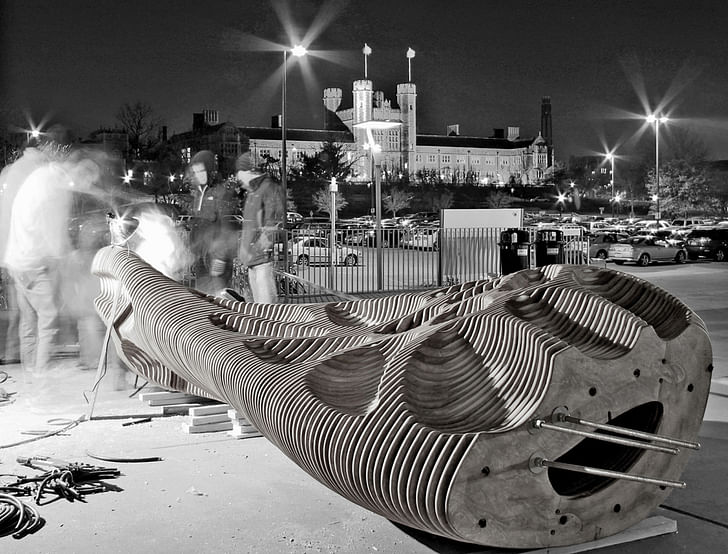
Finding inspiration in the genetics behind a giraffe’s neck, students at Washington University in St. Louis used parametric design methods to build a flexible piece of public furniture for the university campus.
Instructors Joe MacDonald and Arash Adel set out to investigate the agency behind digital design, by challenging students to integrate computation, a flexible material system and performance in a public space. Students designed, fabricated and assembled Saltworks for the Fall 2011 Digital Fabrication Studio, working with the instructors to decide on the installation site. Their final product neatly embodies the genetic analogy to the practice of parametric design; aligning biological reticulations with programmable, repeating systems.
Feedback from Kyle Fant, a participating student, is quoted throughout the profile.
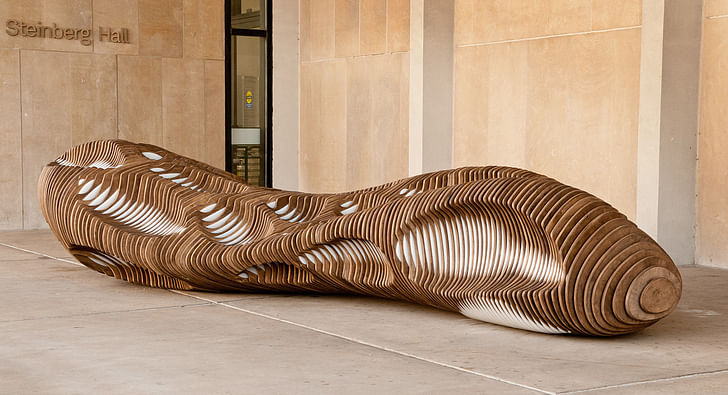
From the project description:
New practices facilitated by digital technology are profoundly altering the ways we measure, create, and ultimately inhabit space. This studio investigated the agency of digital design by integrating computation, material systems and performance. Utilizing digital design/fabrication, the studio was able to calibrate between social and ergonomic codes, as well as the physical artifact.

Titled “Reticulated Form: Full Scale Prototyping,” Saltworks is an innovative outdoor installation designed, fabricated, and assembled by students in Joe MacDonald’s and Arash Adel’s Option Studio at Washington University in St. Louis. The research and design process focused on parametric explorations of reticulation: division, marking, and assembly with the intention of forming programmatic and structural networks. We were seeking creative architectural solutions based on material properties, formal geometry and the spatial implications of a full scale installation.
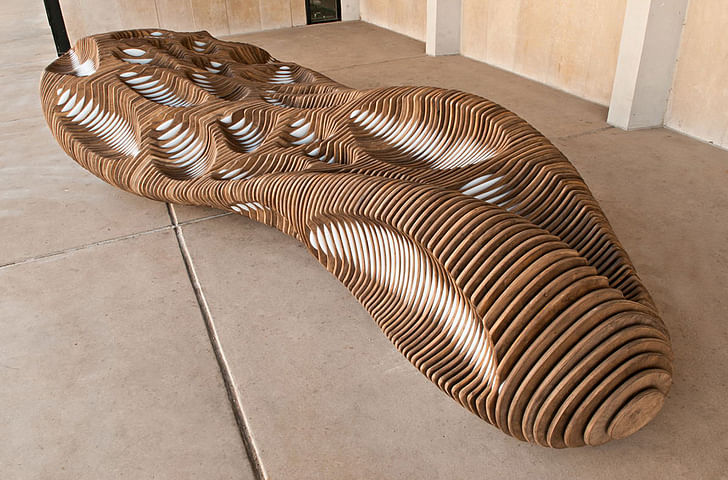
I learned most about how to think parametrically in the design process, and how it would relate to construction materials. Reticulated surfaces such as the patterned skin of a python or giraffe have non-repeating patterns comprised of lines and surfaces generating networks that arise spontaneously but inevitably from the program of genetics. Using this process of form-making as inspiration, our work with reticulation aimed to systematically engage building, landscape and program as self-generating and multi-dimensionally connective systems. The site for the studio was discovered over the course of the semester by integrating conceptual understanding of both the fabricated form and the existing Givens Hall environs. Students were asked to develop individual programs associated with fabrication based on their understanding of a very specific local context.
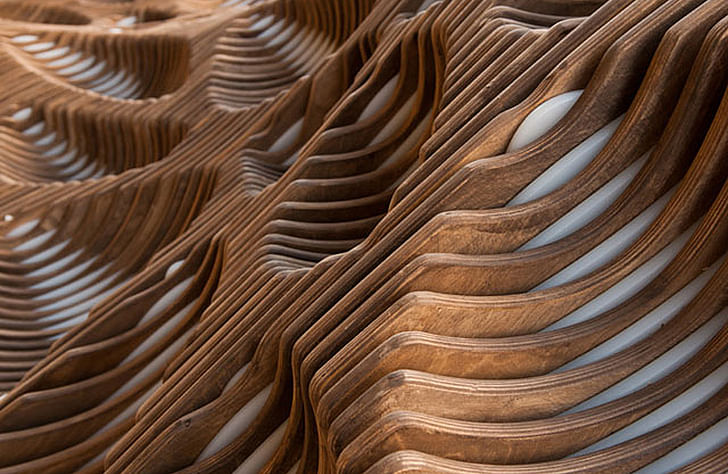
Constrains and Utility
Our budget set a specific constraint on the amount of plywood we could supply for the project. By analyzing the site of the installation, understanding its local relationship to the surrounding environment, and considering the amount of plywood, the main program of the installation was defined. Main program of the installation, an interactive seating landscape, formulated the base geometry for our investigation.
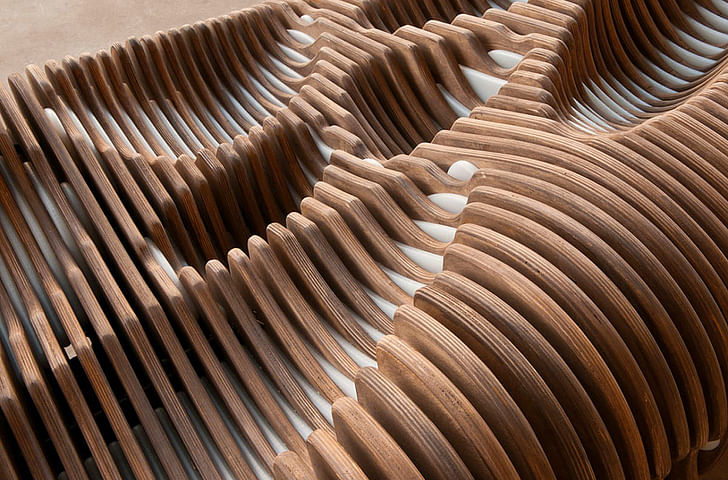
Interactivity: Program and Reticulation
Reticulated surface of the installation has non-repeating patterns comprised of concave and convex surfaces that generate networks arising spontaneously but inevitably from the programming of specific parameters. Using this performance design driven process, our work with reticulation aims to systematically engage ergonomic needs, landscape and program as self-generating and multi-dimensionally connective systems.

I already have used the experience to help with analyzing city data through parametric capabilities. Twist Tectonic-Global Modulation
This diagram shows the capability of the system to produce different spatial and functional possibilities. The relationship between the parts, and detailing and assembly of Baltic Birch and Polypropylene enables the system with the possibility of having different global configuration. It brings fluidity to the form and enhances the interaction between the user and the architectural space.

Fabrication-Assembly
The plywood is stained Baltic Birch with an exterior grade glue, the spacers are polypropylene. It is held together by three steel rods and rotational because of the rubber dowels as shown in the construction drawing. The post-tension steel rods provide a camber for the center of the bench allowing it to rest on two ends. The birch and polypropylene pieces were transferred from baked grasshopper isocurves and points into masterCAM files where they were CNC routed with flip milling.
Overview:
Product: Saltworks
Course: “Reticulated Form: Full Scale Prototyping”, Fall 2011 Digital Fabrication Studio
School: Washington University, St. Louis
Instructors: Joe MacDonald and Arash Adel
Students: Zephyr Anthony, Andrew Davis, Kyle Fant, Xiaoshuang Hu, Allyson Justmann, Andrew McCready, Kelly Peoples, Xiaofei Ren, Bo Sheng, Jody Smith, Ben Stephenson, Tommy Watkins, Duo Yu.
All photos and drawings © Saltworks Studio
Former Managing Editor and Podcast Co-Producer for Archinect. I write, go to the movies, walk around and listen to the radio. My interests revolve around cognitive urban theory, psycholinguistics and food.Currently freelancing. Be in touch through longhyphen@gmail.com
3 Comments
Very curious about how this fits ergonomically. Nice sculptural quality to it - hope it's still around when I finally get back there some time!
It has been a while now, all plywood massacres need to stop.
God forbid someone drops their phone while sitting on there, that would be a hassle to try and get it out. Nice sculpture though.
Block this user
Are you sure you want to block this user and hide all related comments throughout the site?
Archinect
This is your first comment on Archinect. Your comment will be visible once approved.